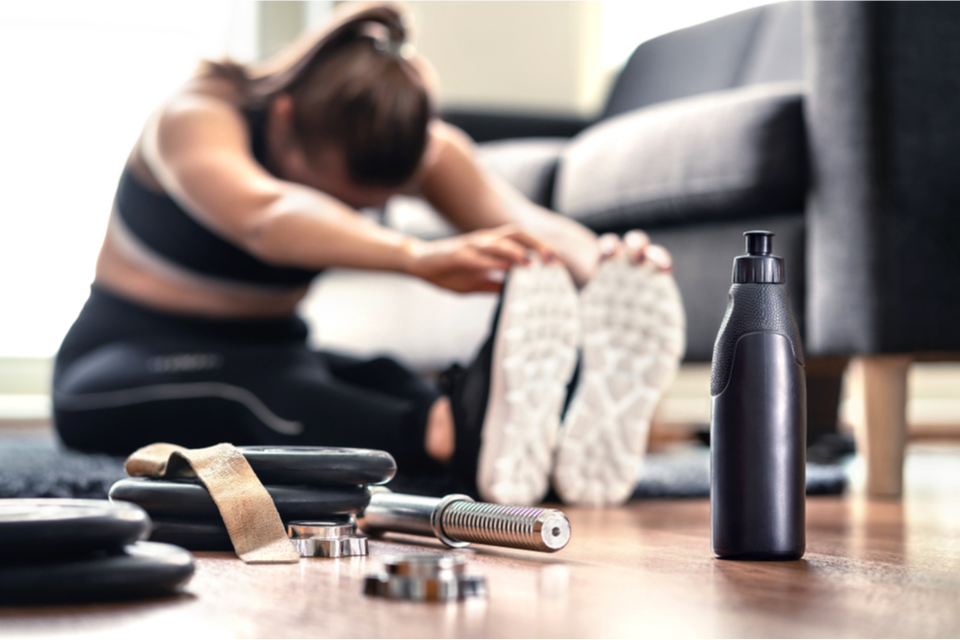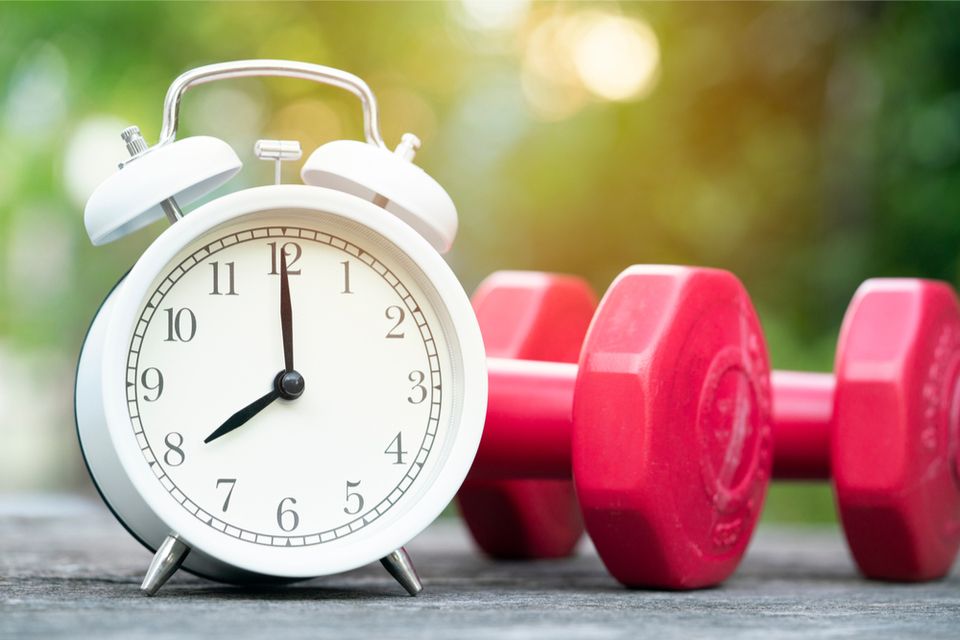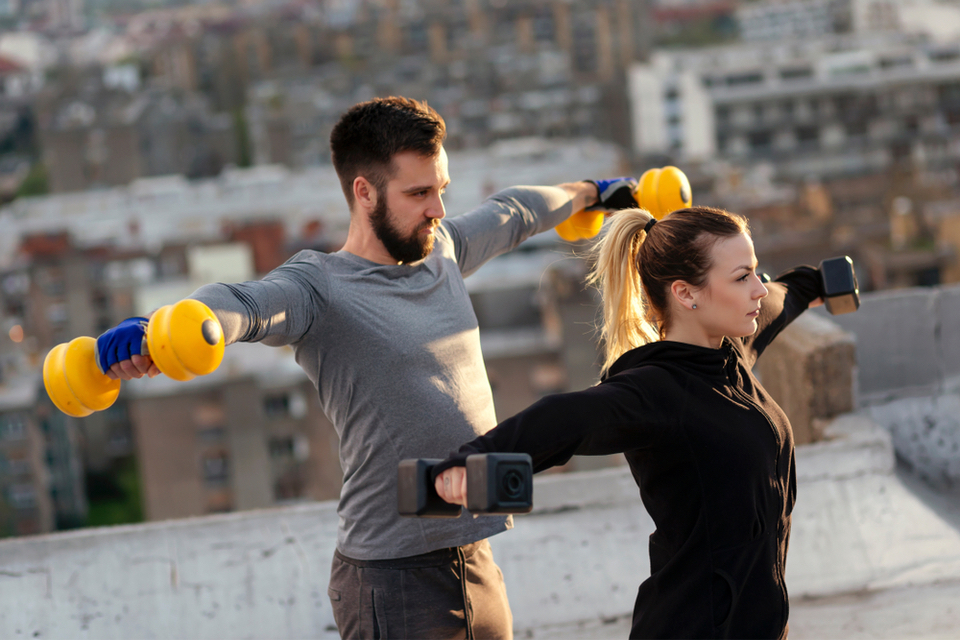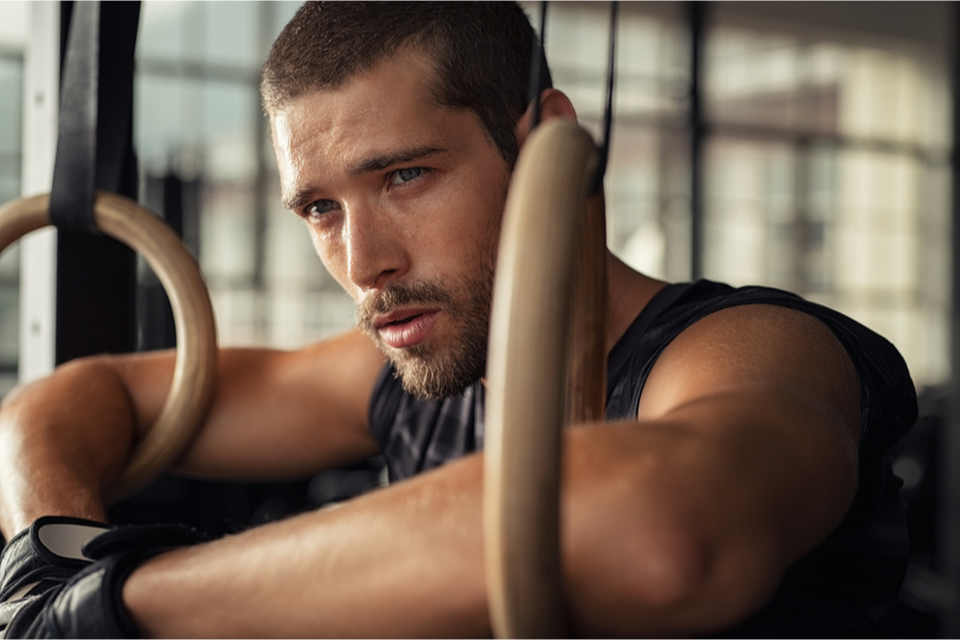Feeling a bit unsettled with your lack of daily routines during the COVID-19 pandemic? You’re not alone! How can we get back on track with our fitness goals when we don’t have consistency?
Your sleep, workouts, and nutrient timing are the scaffolding upon which you can rebuild health and fitness consistency. You may wonder, however, when is the best time to work out?
Great news! It’s not a guessing game. Science answers this question for us. We just have to pick a primary goal and based on that goal, we can figure out the best time of day and even the best type of workout to do. Here’s how you can apply this science immediately.
Start by selecting your #1 goal:
- Fat loss
- Toning up by gaining muscle
- Getting stronger
- Feeling more refreshed by increasing sleep efficiency
Pick one goal that will be your priority for the next 90 days. This choice will guide when to do most of your workouts, and what kind of workouts to do.

Goal: Fat loss
If you picked fat loss, morning workouts are for you. First thing in the morning, our bodies have higher levels of cortisol and growth hormone. This morning hormone ratio sets the body to be a fat-burning machine. Whether you pick cardio, weights, or both, the body can access fat stores more easily in the morning, provided you’ve had a good night’s sleep. For breakfast lovers, great news: you don’t need to work out before you eat! As revealed by Schoenfeld et al, fasted workouts did not increase fat loss compared to enjoying your breakfast or pre-workout shake first.1
---------------
RELATED: Creative Ways to Burn 150 Calories
Goal: Toning up and gaining muscle; Getting stronger
If you picked toning up, muscle gain, or strength, afternoon or evening workouts are better. For those with normal sleep cycles (i.e. going to bed around 11 p.m. and getting up around 6 a.m.), hormonal clocks are often predictable. In the afternoon and evening, testosterone (for both men and women) is higher, and cortisol is lower. This balance represents an optimal time for muscle gain. Kuusmaa et al (2016) indeed found that even when both cardio and weight lifting are part of the same workout, there were greater muscle and strength gains in those who consistently performed their workouts in the afternoon or evening versus the morning.2
Goal: Re-energizing sleep
If your main goal is feeling refreshed from a great night’s sleep, evening workouts comprised of yoga and stretching are for you. In a major national survey, 55% of yoga participants reported improved sleep.3 While there is no “right way” to practice yoga, begin your wind-down practice by selecting poses such as child’s pose, downward-facing dog, forward fold, and feet up the wall. These are all restorative postures that can help reduce stress for a restful night’s sleep. Try including yoga or stretching for 5-30 minutes as part of your wind down for bedtime routine. If you have a smartwatch or phone, see how this practice changes your sleep efficiency.
---------------
RELATED: 3 Nutrients for Better Sleep
---------------
Help! None of these workout plans fit my lifestyle!
What if you have a favorite type of workout that doesn’t match these ideal times of day? What if your schedule doesn’t allow you to pick your workout time? What if mornings or evenings just aren’t your thing? That’s OK!
The most important health, weight loss, toning, or energizing benefits come from consistently getting your workouts in, listening to your body’s individual energy patterns, and making time to rest and recover between them. Start by scheduling 15-60 minutes per day where you can get moving with types of exercise you enjoy. As time goes by and schedules change, you can keep refining your fitness goals and types and exercise timing to support them.
------------
About the Author: Dr. Meredith Butulis is a Sports Medicine Physical Therapist, NSCA Certified Strength and Conditioning Coach, ACSM Certified Exercise Physiologist, NASM Certified Personal Trainer, and Precision Nutrition Certified Nutrition Coach in practice since 2002. She consistently walks the talk as a fitness, physique, and OCR world level competitor and lifestyle transformer since 2006, celebrating many wins along the way. Want more total fitness lifestyle inspiration and interaction? Follow Dr. Meredith on Instagram @Dr.MeredithButulis or join the free “Fitness Focus Fuel” Facebook Group.
-------------
REFERENCES
1. Schoenfeld BJ, Aragon AA, Wilborn CD, Krieger JW, Sonmez GT. 2014. Body composition changes associated with fasted versus non-fasted aerobic exercise. J Int Soc Sports Nutr. 11(1):54.
2. Kuusmaa M, et al. 2016. Effects of morning versus evening combined strength and endurance training on physical performance, muscle hypertrophy, and serum hormone concentrations. Applied Physiology, Nutrition, and Metabolism. 41:1285-1294.
3. Stussman BJ, Black LI, Barnes PM, Clarke TC, Nahin RL. 2015. Wellness-related use of common complementary health approaches among adults: United States, 2012. National health statistics reports; no 85. Hyattsville, MD: National Center for Health Statistics.
---------------
NEXT UP: Stop Wishing, Start Doing










